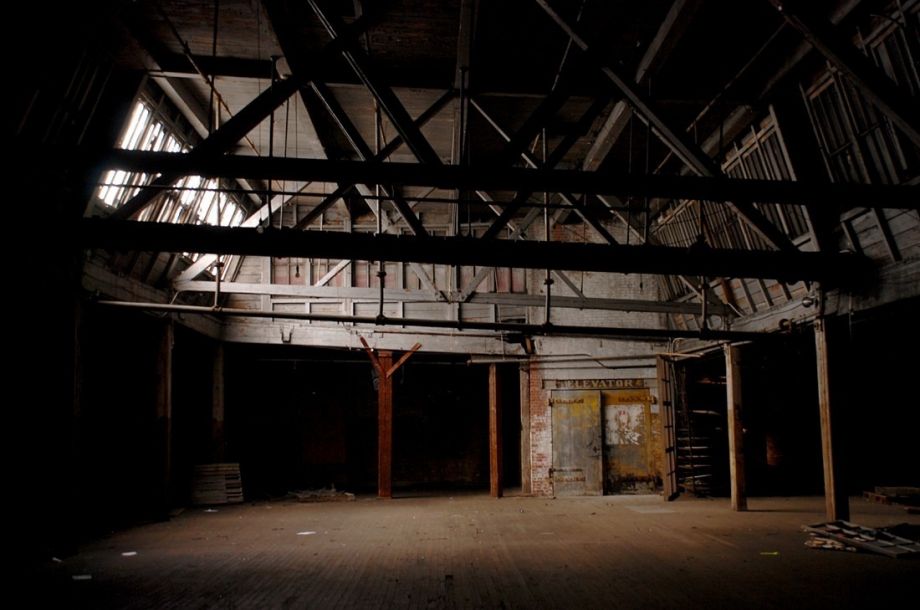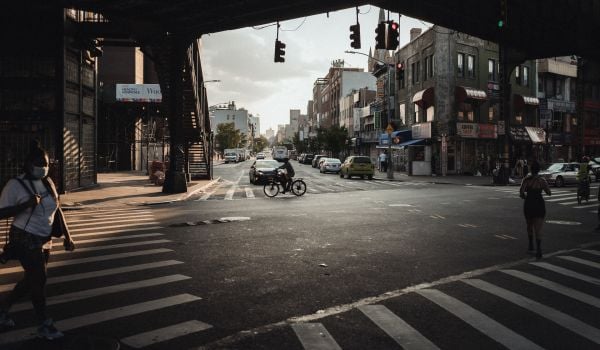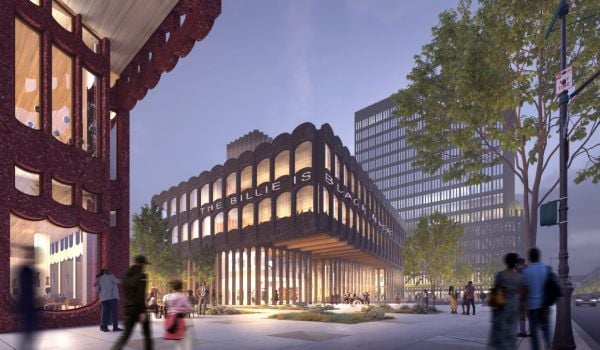Nathan Kensinger is a photographer and filmmaker with a fondness for New York City’s abandoned industrial fringe. Since 2007, Kensinger has published stunning photo essays on his blog revealing what he refers to as “hidden worlds,” the often crumbling, deserted buildings that would likely go unnoticed without his attention. Kensinger has exhibited his work at various museums and galleries, including the Brooklyn Museum and the Museum of Contemporary African Diasporan Arts, and his work has appeared in a slew of publications, such as The New York Times and New York Post. Information about his film “Covered Tracks,” a portrait of a three-mile-long underground tunnel, can be found here.
Where are you from and why were you drawn to New York?
I grew up in San Francisco and came east to go to college in Massachusetts, where I studied documentary film. I moved to New York to do documentary film work in 2003, and started doing my own photography.
Do you remember the first abandoned building you photographed, and how your interest progressed?
It was the Schwartz Chemical Factory in Long Island City. I’d started exploring the Brooklyn waterfront by bike and car. I used to love exploring Red Hook, but a lot of it is gone—they demolished an active dry dock for the Ikea parking lot.
What are some of the greatest challenges you face in your work?
A lot of the buildings on the Brooklyn waterfront that I saw when I first started doing this aren’t there anymore—that’s one of the most heartbreaking things. When I started out, it wasn’t hard to find something that captured the imagination.
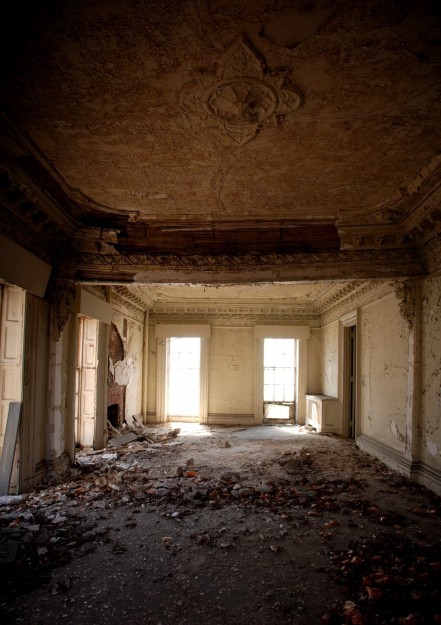
above: Brooklyn Navy Yard, Admirals’ Row Grand Ballroom
How do you find your subject matter?
I do a lot of walking around the city and a lot of biking. And I just talk to people and hear about buildings through word of mouth.
Has there ever been anything so vivid or disturbing that you hesitated to photograph it?
If someone’s living in an abandoned building it always gives me pause. I don’t want to violate someone’s space. You always have to think about the ramifications of publicizing the buildings. If you publicize certain things it can cause trouble.
Do you always work alone?
I tend to photograph with other photographers for safety. In the tunnel [while shooting the film “Covered Tracks”] I always had one other person with me.
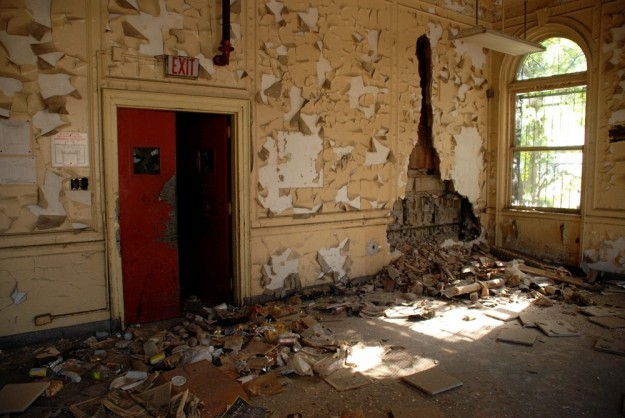
above: Greenpoint Hospital nurses’ residence.
Why do you do what you do?
I want to document these buildings before they’re demolished. It opens people’s eyes to see the inside of these places. Most people pass a building and might notice the outside, but the interior architecture is what’s often really amazing.
I’m coming at it from a historical perspective, out of respect for the buildings. I’m looking for things that are unseen, places that no one has told the story of. There are other photographers who shoot abandoned buildings, and they want it all to stay a secret. But if you keep the buildings secret, then they’ll disappear.
What do you hope to achieve by photographing these places?
At the very least, I want people to look at the city differently, to appreciate what they see. Beyond that, it’d be nice if people wanted to preserve the character of their neighborhood, or at least know that their neighborhood once had a character. Otherwise, it’s like history has been erased.
What was it like spending a year working underground for your film “Covered Tracks?”
It was actually about 12 full days of shooting. We wanted to capture the way it looked in all four seasons. There’s another film called “Dark Days” from the ’90s, which was a portrait of the people living in the tunnel—it was a homeless community for years before Amtrak took it over—but our film is a portrait of the tunnel itself. It’s three miles long and feels almost like a cathedral, with vaulted ceilings that let the light stream in. You can also hear the conversations of the people above in Riverside Park, so audio is a big part of the film.
What’s next for you? Do you think you’ll ever run out of material in New York?
I’ve covered most of the Brooklyn waterfront. My focus has changed lately to photographing neighborhoods that have been affected by the recession, showing what happened and where things are going. One neighborhood I recently photographed is Edgemere in the Rockaways. There are about 20 or 30 city blocks on the ocean where all the homes were demolished in the 1960’s, and it has become a wasteland with homeless camps and wild dogs.
Sarah Amandolare is a freelance journalist.

